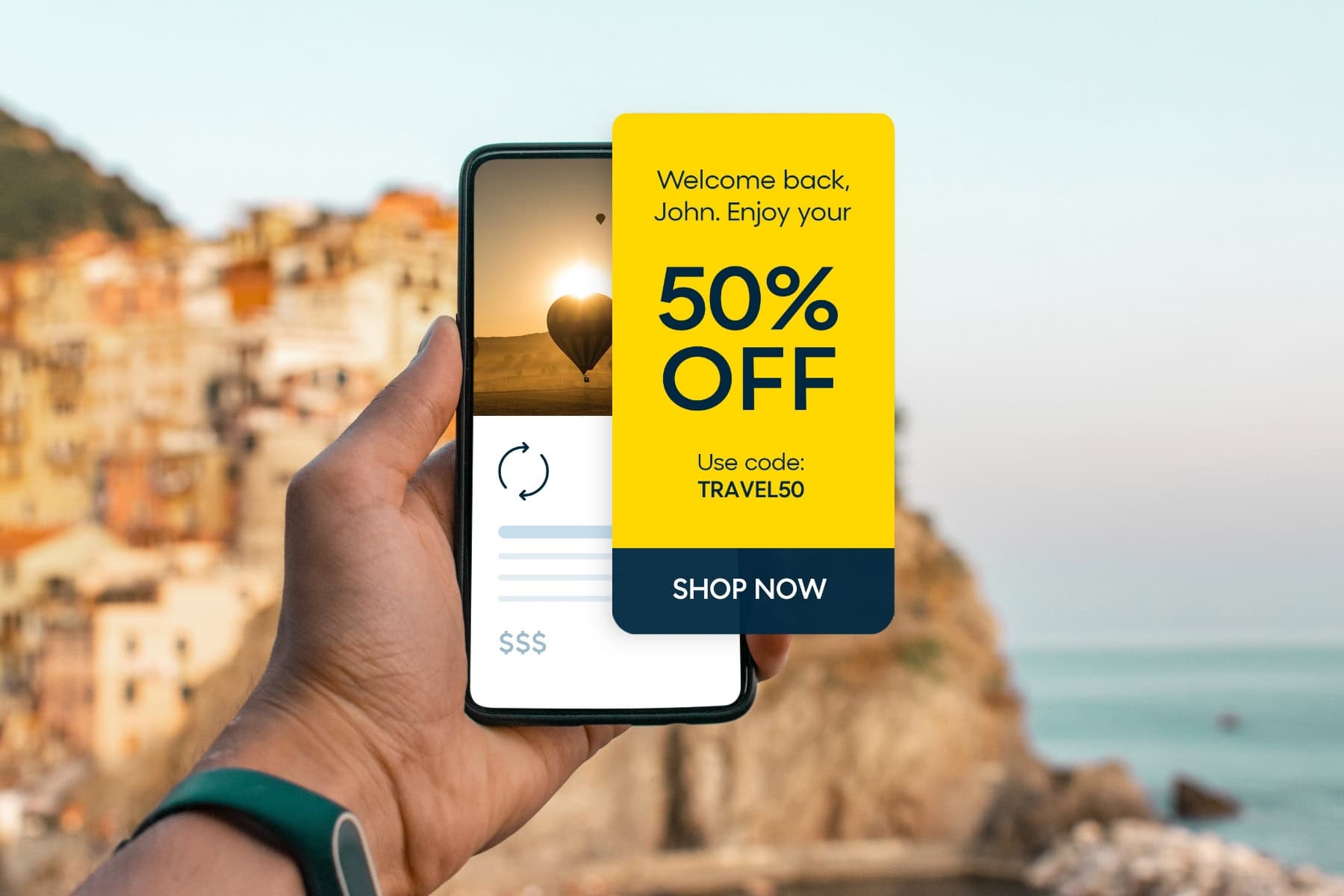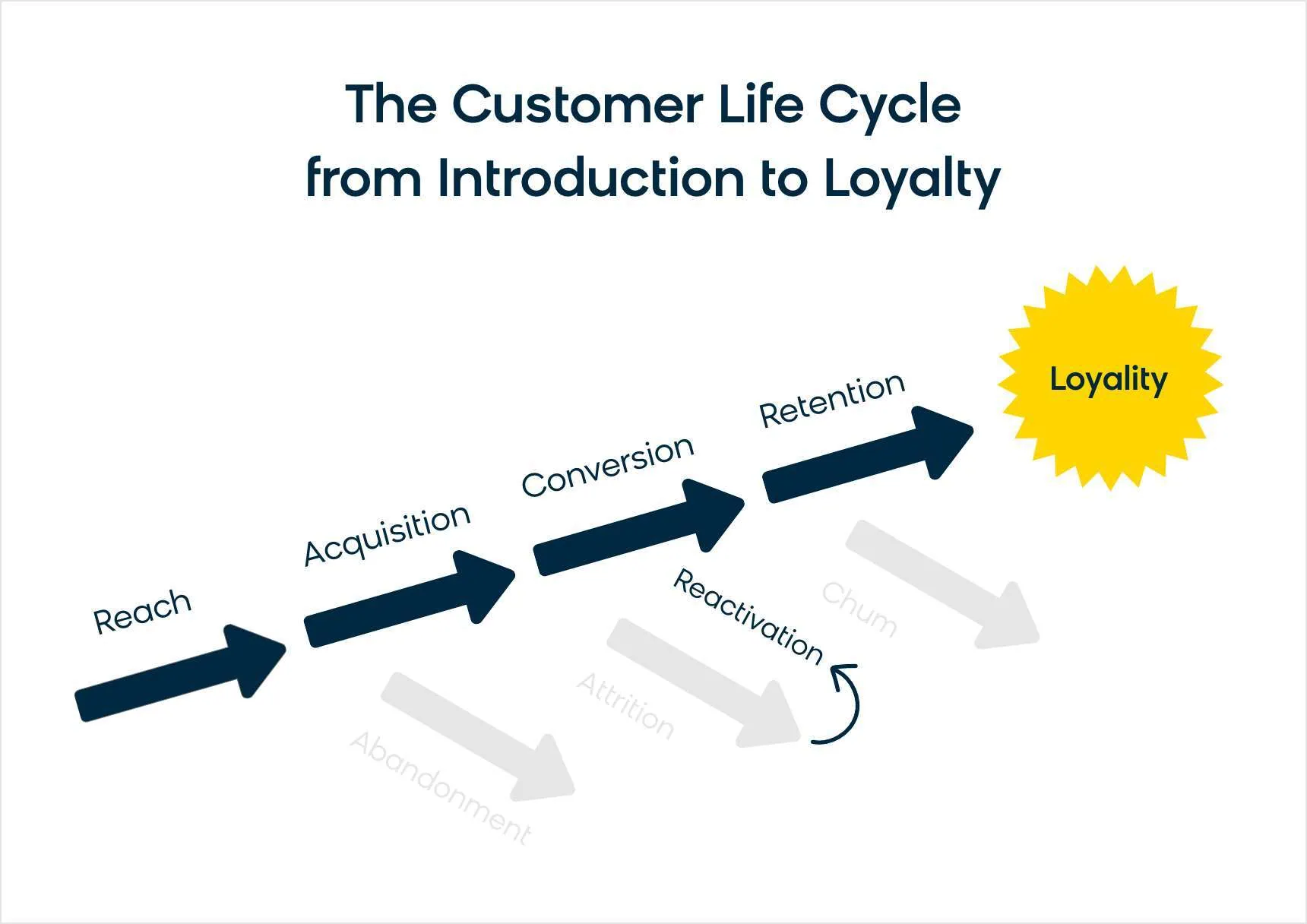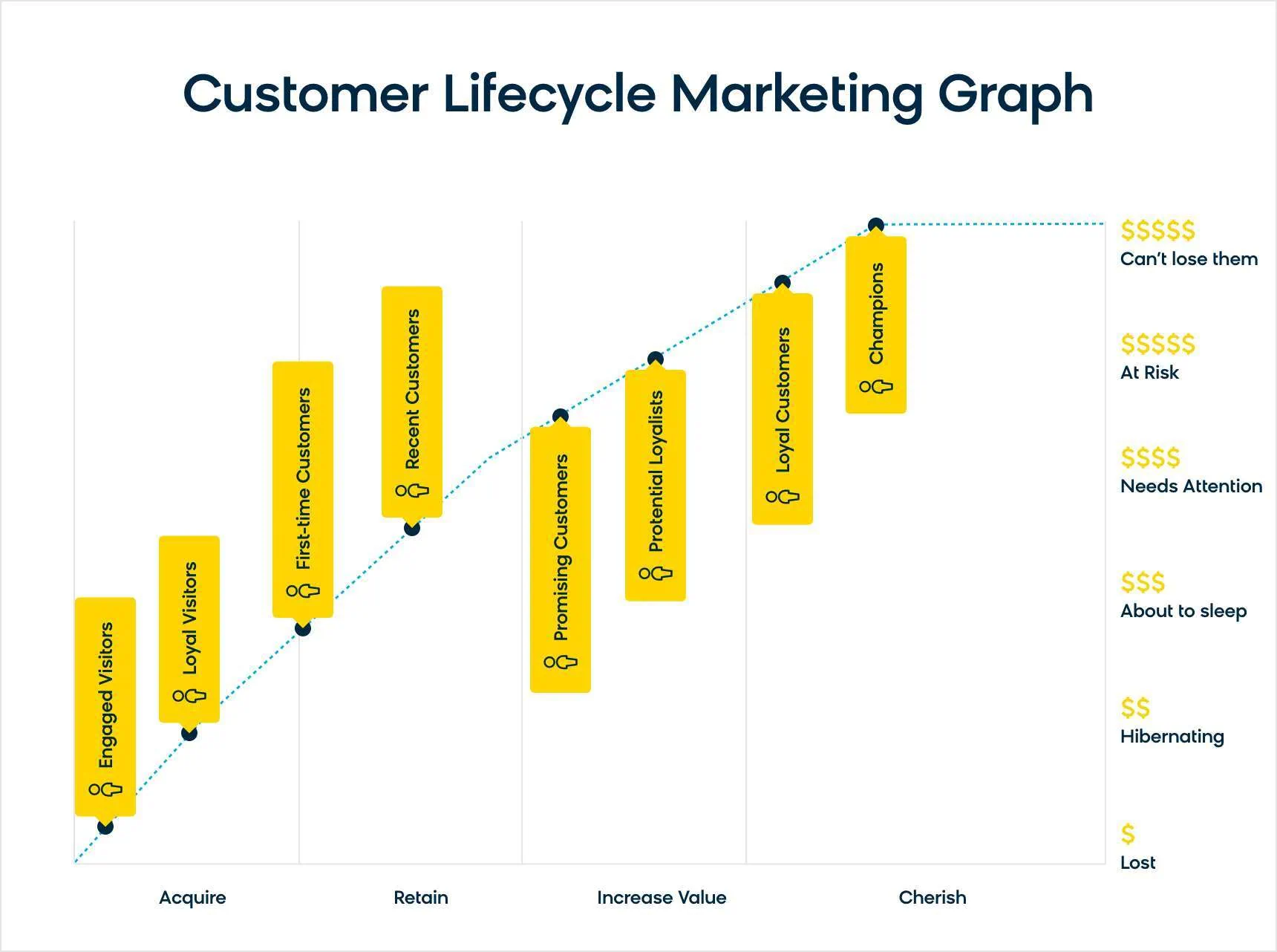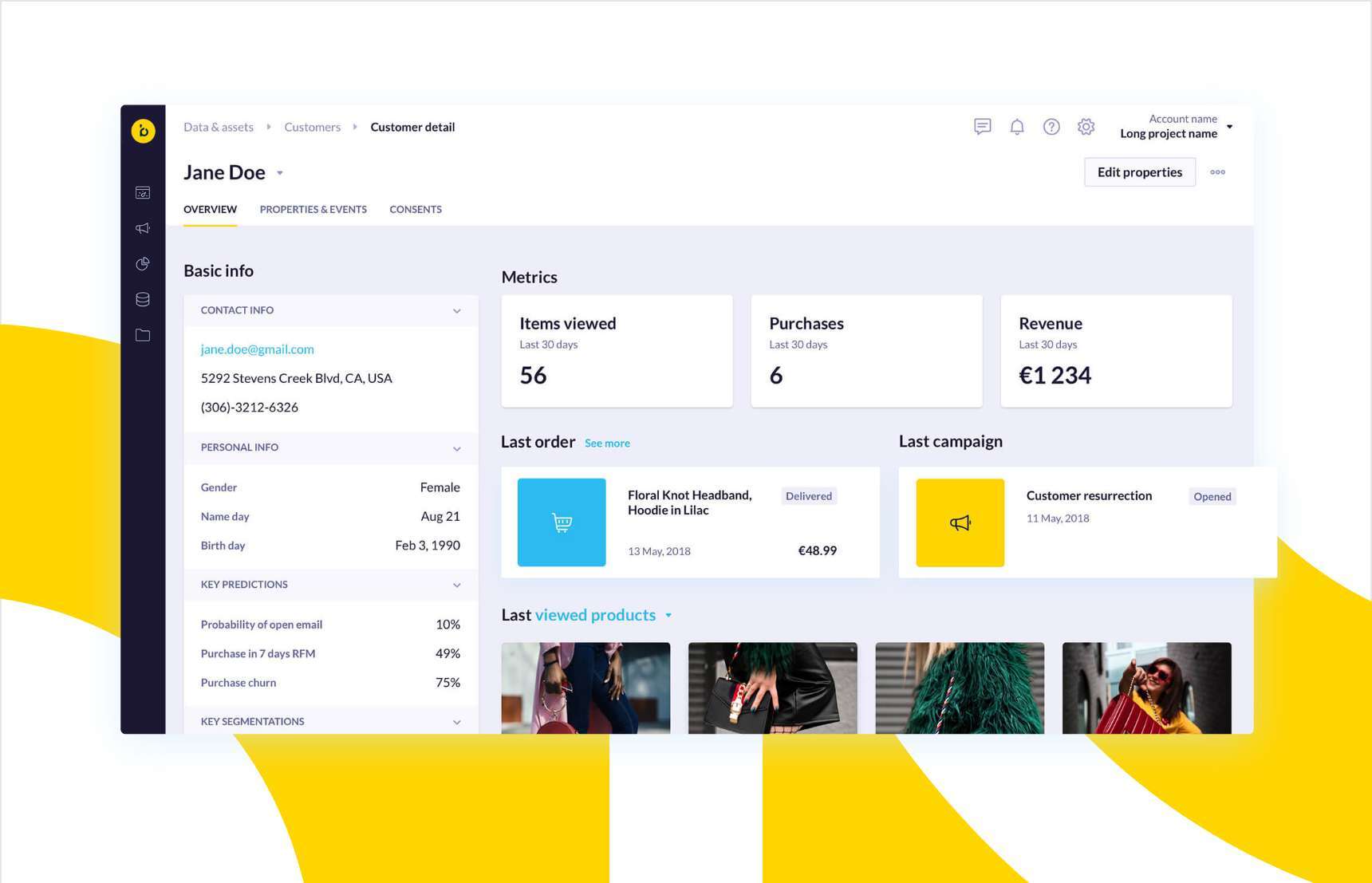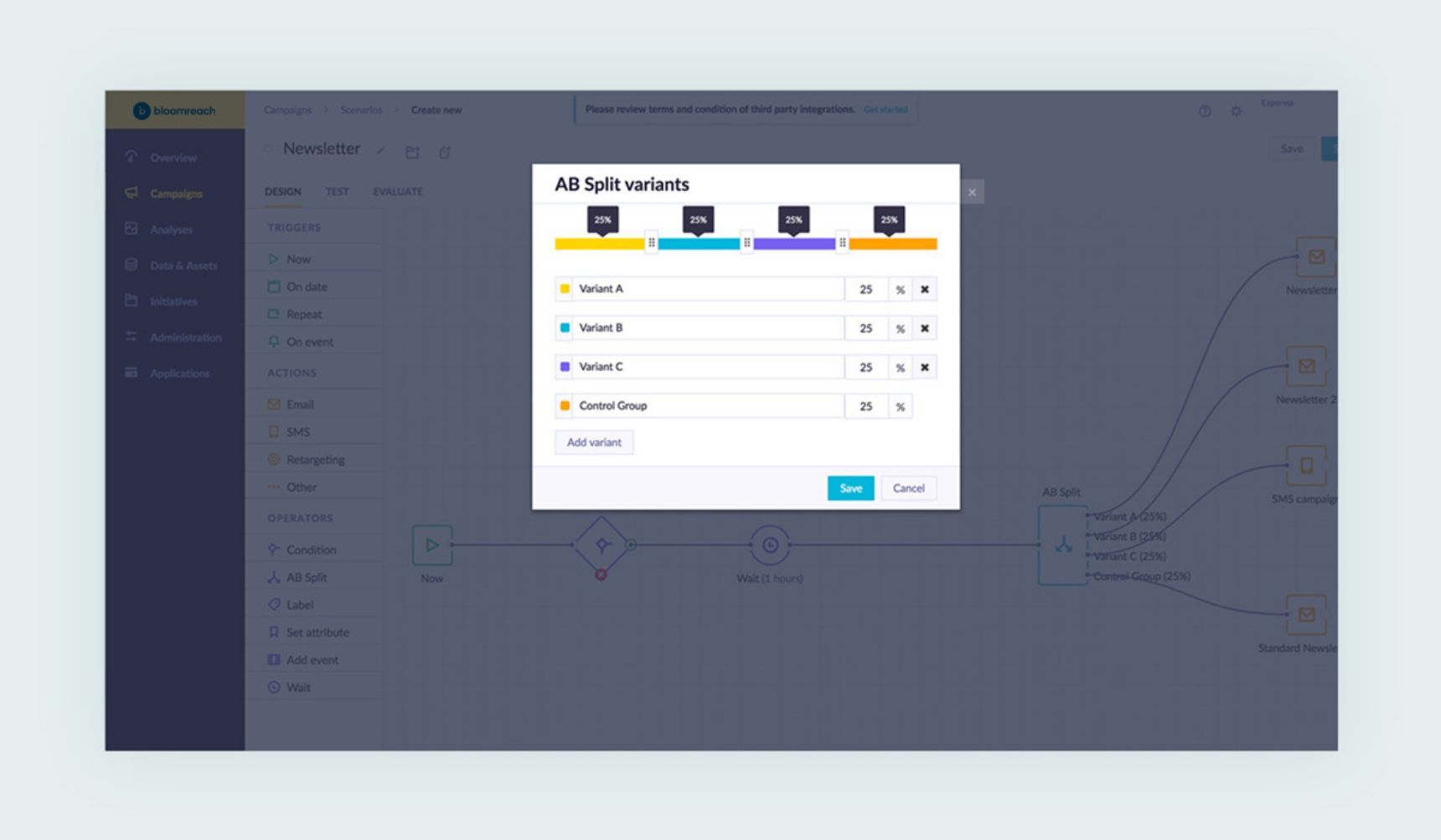If you’ve ever tried your hand at marketing for your ecommerce business, you know it isn’t a simple, straightforward process. There isn’t a step-by-step, fool-proof approach to get potential buyers to become repeat customers.
But while there is no magic formula, there is a valuable way to approach the customer’s journey: customer lifecycle marketing.
Understanding the different customer lifecycle stages and the marketing messages that correspond with each phase is a vital step in any marketing strategy. But if you Google “customer lifecycle marketing” or “customer lifecycle management,” you’ll come up with a number of different results.
There’s a variety of lifecycle marketing strategies out there, and it really boils down to what works best for your business. You need to craft and sculpt your own customer experience, taking into account each lifecycle stage that is relevant to your audience.
Keep reading to learn everything you need to know about customer lifecycle marketing, the stages of the customer lifecycle model, and how you can build your own lifecycle marketing strategy.
What Is Customer Lifecycle Marketing?
To understand customer lifecycle marketing, you first need to understand the customer lifecycle.
The customer lifecycle is a way of describing the different stages a customer goes through during their interaction with your brand. It’s the plot points of your relationship with them — the emotions they have, the choices they make, and their interactions with your business.
Customer lifecycle marketing describes the process of marketing to customers based on the lifecycle stage they are in. It’s the marketing decisions you make to address the feelings and attitudes of your customers.
To provide customers with the most value, you want to address your customers based on the stage they are in at the time of your message. That way, you can meaningfully communicate with them.
You can target customers through the most ideal marketing channels with tried and tested campaigns that have worked for that stage before, preventing churn, and increasing their customer lifetime value.
One important thing to keep in mind is that the customer lifecycle is non-linear. In the age of digital commerce, there is no straight line in the customer journey that leads right to customer loyalty.
While graphic representations show a progression of stages toward an ideal customer, some users may not follow the predicted path. Some may churn early, or end up as one-time buyers, or skip stages depending on their activity.
The bottom line is, every customer journey is unique. You need a thorough understanding of customer behavior, your audience’s wants, and the different stages of the buying process for your specific audience to create a winning lifecycle marketing plan.
Why Is Customer Lifecycle Marketing Important?
Customer lifecycle marketing has grown to prominence and importance alongside the internet. As ecommerce exploded into the dominant way we shop, research, and interact with brands, lifecycle marketing has become the gold standard for modern businesses.
Back in the year 2000, NetGenesis and Target Marketing published E-Metrics: Business Metrics For The New Economy. The whitepaper detailed the idea of the customer lifecycle and how to use it in the still-maturing industry of online business.
The authors discuss the business cultures of the past and how we have now shifted to a customer-centric economy. While mass production and distribution were the dominant problems to solve for previous generations, our business culture has matured to meet the demands of manufacturing and transportation logistics. Today, the real puzzle to solve is the customer and what makes them tick.
The rise of the internet led to this new area of importance. With so much customer information now available to businesses — behavioral data, purchase histories, preferred channels, devices, and experiences — gaining a complete understanding of individual customers is essential to business success.
Data is the key, and it opened the door to customer lifecycle marketing. The authors of E-Metrics created a customer-focused lifecycle model that is essentially the same blueprint that businesses use today:
But data-driven ecommerce was only just beginning at the turn of the century. The personalization and automation techniques the paper describe have only recently begun to realize their full potential, which is something the authors understood to be the case.
“The rich store of information collected in the course of doing business on the Internet should be carefully archived and protected. Holding onto your raw data today will allow for deeper and deeper analysis tomorrow.” – E-Metrics: Business Metrics For The New Economy
To focus on your customers, data must be at the heart of your business efforts. Your data holds the answers that customer lifecycle management is designed to answer: What does my customer want? How do I get them to purchase? When, where, and what is the ideal way to engage with them?
But all your data needs a system. It needs a framework that brings it all together so you can see every customer touchpoint in an analytical and understandable way. It needs the customer lifecycle model.
What Are the 5 Stages of the Customer Life Cycle?
As we stated above, not every business’ customer lifecycle is the same. One customer journey may be longer and some are shorter. Some businesses will want to double down on customer acquisition and attracting customers, while others will focus on existing ones and use brand advocacy to bring in business.
No matter what your lifecycle length turns out to be, there are universal stages that need to be accounted for in every customer lifecycle management strategy. Understanding these stages will help you segment your audience and target their specific needs, whether they are potential customers, existing customers, returning customers, or customers that have lapsed and are in danger of churning.
The Importance of Customer Segmentation
Organizing your audience into the most relevant segments for your customer lifecycle is an essential step for customer lifecycle analysis. You need to group people with shared characteristics into segments in order to effectively market to each group and speak to their specific needs.
RFM analysis (recency, frequency, monetary analysis) is a popular and effective segmentation method for placing customers into different stages of the customer lifecycle management process. It helps you organize your customers by what matters most to your marketing efforts — whether or not your customer recently made a purchase, how frequently they engage with and buy from your brand, and how much revenue you generate from their purchases.
Read This Next: Customer Segmentation: Options Marketers Should Know
Bloomreach’s customer lifecycle model is based on thousands of hours working with ecommerce sites and enhanced with detailed user data that we used to create a custom RFM analysis for customer lifecycle segments. It encompasses all the essential phases, audience types, and marketing tactics you need to optimize your customer touch points.
Our customer lifecycle model identifies five main stages:
- Acquire
- Retain
- Increase Value
- Cherish
- Reactivate
We then break those stages down further to create 14 customer segments, using an RFM analysis for the traditional 11 segments (this article contains a good representation of the 11 segments and their corresponding RFM scores), and simple segmentations for the three added segments of engaged visitor, loyal visitor, and first-time customers.
Finally, Bloomreach’s model introduces specific campaigns you can use to interact most effectively with each segment. Take a look:
How To Build a Customer Lifetime Marketing Strategy
To succeed in customer lifecycle management, you need to know who your audience is, what steps you need them to take, and the right lifecycle marketing campaigns to make that goal happen.
Here’s a step-by-step guide for identifying and influencing each customer lifecycle stage for your business.
Bring New Traffic to the Site and Convince Them To Make Their First Purchase
Engaged Visitors:
Who they are: Users who visit but don’t purchase or provide an email address.
What your goal is: Secure a communication channel with the customer.
Marketing campaigns:
- Email collection banner
- Banners promoting unique selling propositions of the site
- Limited-time vouchers for first purchases
Loyal Visitors
Who they are: Users who don’t purchase but have provided an email address.
What your goal is: Get them to make their first purchase.
Marketing campaigns:
- An email with fresh sales right after their visit
- Weekly newsletters featuring best-selling products
- An onboarding email newsletter campaign
Inspire Your New Customers To Make Another Purchase
First-time Customers
Who they are: Customers who have made one purchase.
What your goal is: Ensure their experience is positive enough for a second purchase.
Campaigns:
- Feedback surveys and offer vouchers to complete them
- Emails with complimentary product recommendations
Recent Customers
Who they are: Customers who purchased recently but haven’t purchased often.
What your goal is: Ensure a positive post-purchase experience.
Campaigns:
- Ask for product reviews and provide incentives
- Give vouchers for referrals to be shared with their friends
- Offer to provide reminders for items they may want to purchase again soon
Upsell Your Retained Customers To Increase Purchase Frequency and Average Order Value
Promising Customers
Who they are: Customers who make periodic purchases but spend little.
What your goal is: Slowly increase their frequency of orders and/or monetary value.
Campaigns:
- Limited-time offers
- Bundle deals to incentivize higher spending
Potential Loyalists
Who they are: Customers who have made recent purchases, spend a good amount, and order often.
What your goal is: Continue increasing the frequency and monetary value of their orders.
Campaigns:
- Offer priority shipping as a thank you for their loyalty
- Continue to incentivize higher spend with bundle deals
Show Your Most Valuable Customers How Valued They Are
Loyal Customers
Who they are: Customers who spend a lot and are responsive to marketing communication.
What your goal is: Keep them happy and upsell them to encourage champion-level engagement.
Campaigns:
- Send a gift voucher with a personal note and a team photo
Champions
Who they are: The best customers. They spend the most and spend often.
What your goal is: Keep giving them positive experiences with your store. Show them how important they are.
Campaigns:
- Reward them with exclusive access to new products
- Include the occasional gift in their orders
- Have customer care call them personally when communication is needed
Bring Back Lapsed Customers With a Focus on Valuable Audience Types
Can’t-Lose Customers
Who they are: Former champions who have stopped purchasing.
What your goal is: Use whatever you have at your disposal to bring them back. These are the big customers that you do not want to lose for good.
Campaigns:
- Send them store credit to get them purchasing again
- Call them directly to ask why they’ve stopped shopping with you
At-Risk Customers
Who they are: Previously high-value customers who have recently stopped purchasing.
What your goal is: This group needs a push to get them back to purchasing — act now before they lapse completely.
Campaigns:
- Send a personal note to reengage with them, along with a small gift
- Email exclusive offers just for them
Customers That Need Attention
Who they are: Customers with above-average frequency and monetary value, but who haven’t purchased recently.
What your goal is: Similar to the “at risk” audience but with less money behind your reactivation campaigns.
Campaigns:
- Email them directly to ask why they’ve stopped shopping with you
- Send exclusive offers that are less valuable than those sent to the at-risk customers
About To Sleep Customers
Who they are: Low-value customers who haven’t purchased recently.
What your goal is: Keep these customers without spending more than the effort is worth.
Campaigns:
- Reengage them on social media
- Use the same campaigns as the “needs attention” audience but with less budget
Hibernating Customers
Who they are: Low-value customers who have stopped purchasing.
What your goal is: Worth reactivating, but don’t spend too much time or money.
Campaigns:
- Send them a reactivation newsletter
- Retarget them with social media campaigns
Lost Customers
Who they are: Lowest-value customers who have stopped purchasing.
What your goal is: Worth reactivating, but spend even less time or money than on hibernating.
Campaigns:
- Send them a reactivation newsletter
Applying Customer Lifecycle Management
Customer lifecycle management is the process of monitoring, tracking, and guiding the customer journey through each of the lifecycle stages. It’s the method by which businesses shape their customer experiences, assign KPIs, and optimize their customer journey’s marketing performance through the lens of the customer lifecycle.
To do this, you first need to run an RFM analysis on your data — something a customer data platform can help you with — and group your customer base into the segments described above. Then you can start designing campaigns for each segment.
Essential Customer Lifecycle Management Steps
There are plenty of creative and unique ways to target your customer segments. But there are certain steps and important tools that every marketer needs before they can start designing and sending worthwhile communications.
For starters, you need to be able to craft campaigns across all your channels. To do so, you’ll need:
- An email campaign manager
- An SMS campaign manager
- A push notification campaign manager
- A banner ad campaign manager
It’s also important to systematize your communications. Ideally, you want your campaigns to run automatically. Marketing automation can help you easily move your users through the customer lifecycle from visitor to champion, with different campaigns used for each segment as users pass through it.
To make this a reality, you need all of your customer information organized into a single customer view — a database with profiles for every individual user, detailing their interests, purchase history, site activity, etc.
Keeping your data fresh and up to date is crucial for your marketing efforts. The more frequently your single customer view updates your customer data, the better. Otherwise, you risk customers receiving communications meant for a segment they no longer belong to, or not receiving communication meant to prevent churn until it’s too late.
Finally, you need a way to A/B test your campaigns to make sure they’re working. And the more you test, the more fine-tuned your campaigns will be. Make sure your testing software is quick and easy to use to make the process easier.
Bloomreach Is the Tool You Need For Customer Lifecycle Management
If you’re looking for one powerful, comprehensive platform to take your customer lifecycle management to the next level, look no further than Bloomreach.
Using Bloomreach Engagement, our real-time customer data and marketing automation solution, businesses can perform a thorough RFM analysis of their customer base, get a 360° view of each customer, and group audiences into lifecycle segments. All with no technical expertise needed.
And our platform offers unmatched intelligent marketing automation and campaign orchestration across 13 channels, including email, SMS, and ads. However you want to connect with your customers, Bloomreach Engagement makes personalized campaigns easy to execute.
Our single customer view is updated in real time — the second a customer does something that should place them in a different segment, they are moved automatically. With machine learning capabilities and AI-powered segmentation, you can anticipate your customer’s next move, adapt to changing demands, and be present exactly when and where they’re ready to engage with up-to-the-moment intelligence.
If a one-time buyer makes a repeat purchase, their upsell campaign can kick in. If a customer starts to lapse, the reactivation campaign can automatically take over. All the campaigns you create within Bloomreach Engagement will continue to run automatically for each continuously updated segment, so you don’t need to use valuable time monitoring your audience’s status.
Plus, it’s easy to A/B test your campaigns with our campaign designer, which has A/B testing capabilities built in. You can try one use case on a particular group of promising customers and test another on a similar second group. And a third, fourth, fifth, or however many you want. And you can compare them side by side in real time, with a control group that allows you to see how much value each campaign is actually generating.
And to make sure your efforts are hitting your goals, Bloomreach Engagement lets you monitor your results in easy-to-understand dashboards, ensuring campaigns not only delight customers, but also drive measurable business value.
Are you ready to elevate your customer lifecycle management and increase your customer lifetime value? Then we’d love to chat about all the benefits our platform has to offer. Schedule a personalized demo today with Bloomreach to learn more.


